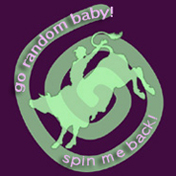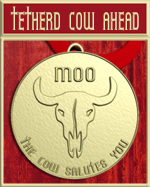Wed 28 Sep 2005
Incantation (Part 1)
Posted by anaglyph under Books, Ephemera, Geek, Music, Spooky
[7] Comments

This is a necessarily longish story for Joe about how, in spite of the fact that I don’t believe in EVP (Electronic Voice Phenomena), it up and bit me on the bum.
EVP is the term given for the discovery on previously recorded magnetic tape of strange indistinct voices that weren’t there when the original recording was made.
This phenomenon was first ‘discovered’ in 1959 by philosopher and birdwatcher Friedrich Jurgenson while he was recording bird sounds in the backyard of his Swedish house, and later brought to greater attention by Latvian author Konstantin Raudive. The voices captured in this way are sometimes referred to as ‘Raudive Voices’.
Now I should say here that both Friedrich Jurgenson and Konstantin Raudive believed that these faint voices that appeared in the etheric hiss of the magnetic tape were nothing less than the spirits of the dead attempting to make contact with us living folk from ‘the other side’. Not only that, Jurgenson and Raudive were of the mind that they could actually communicate with these spirits by asking questions and then leaving pauses in which the voices might answer.
I don’t for a moment believe that’s so, but from the first time I heard of this peculiar phenomenon many years ago I found it deeply intriguing.
I was aware that Konstantin Raudive had written a book about his encounters with the voices (he made something like 70,000 recordings, believe it or not) called Breakthrough, and I had tried for many years to find an edition of it, but that turned out to be easier said than done. Not many copies were printed and it is an obscure work that probably held little interest for most people. These days, like so many arcane works, portions of the text are available on line, but at the time of this tale that wasn’t the case. It was a very rare book. Eventually I gave up the search and more or less forgot about it.
When was developing ideas for my CD Houdini, I wanted to include a piece based on EVP. I wasn’t quite sure exactly how I was going to go about it or what I was going to do, but earlyish one Sunday morning I lay in bed thinking about Breakthrough and how great it would be if I had a copy for inspiration or possibly source material. Then a thought popped into my head with such eerie clarity that I said it out loud: “Goulds!”
This is what a Sydney bookshop guide says about Goulds:
A Sydney institution, Goulds stocks mostly secondhand books – piles and piles of them, in dusty disorganised piles spread over two stories. It also has videos, vinyl records, and magazines. There are a pair of friendly twin cats which frequent the place.
Goulds is literally five minutes walk from my house and one of my favourite places in Sydney. It seems plain idiotic to me now that I hadn’t at least tried to find Breakthrough there.
There are few things I like better on a Sunday morning than to wander through the ramshackle aisles of a secondhand bookshop, so I got up, grabbed a coffee and made my way to Goulds. If you didn’t understand it from the description above, I should say that Goulds’ book classification system is eccentric at best and insane otherwise. That’s being charitable. And it’s a huge place. Looking for a particular title in there is not a task taken on lightly, or with more than an infinitesimal hope of success.
Nevertheless, it was worth a try.
This is what happened. In real time. I walked into the ground floor entrance. I thought “Hmmm, now where would the most likely place for such a book be?” I headed up the aisle where I thought my best chance lay, picked a shelf at random, ran my hand along the first three or four books, and pulled out a copy of Breakthrough.
Really.
It cost me $7.
[To Be Continued]




